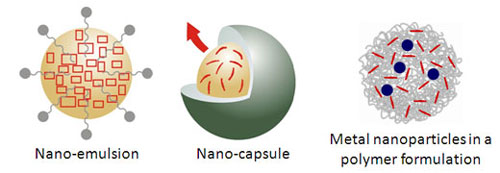Nanopesticides: A New Generation of Crop Protection Products
What are Nanopesticides?
Nanopesticides are a new class of crop protection products that utilize nanotechnology to enhance the efficacy, safety, and sustainability of pesticides. These innovative formulations incorporate nanomaterials, such as nanoparticles, nanoemulsions, or nanocapsules, to improve the delivery, targeting, and controlled release of active ingredients.

Key Features of Nanopesticides
Nanopesticides offer several advantages over conventional pesticide formulations:
- Enhanced Efficacy: Nanopesticides can improve the effectiveness of active ingredients by increasing their solubility, stability, and bioavailability. This allows for lower application rates and reduced environmental impact.
- Targeted Delivery: Nanomaterials can be engineered to selectively deliver the active ingredient to the target pest or pathogen, minimizing off-target effects and protecting beneficial organisms.
- Controlled Release: Nanopesticides can provide sustained release of the active ingredient over time, reducing the need for frequent applications and improving crop protection.
- Reduced Environmental Impact: By using lower doses and minimizing off-target effects, nanopesticides can reduce the environmental footprint of crop protection products.
Types of Nanopesticides
Nanopesticides can be categorized based on the type of nanomaterial used:
Nanoparticle-based Pesticides
These nanopesticides utilize inorganic or organic nanoparticles, such as silica, titanium dioxide, or polymeric nanoparticles, as carriers for the active ingredient. The nanoparticles can be surface-modified to improve their stability, compatibility, and targeting properties.
Nanoemulsion-based Pesticides
Nanoemulsions are thermodynamically stable dispersions of two immiscible liquids, with droplet sizes in the nanometer range. These formulations can enhance the solubility and bioavailability of poorly water-soluble active ingredients, improving their efficacy and reducing the required dose.
Nanocapsule-based Pesticides
Nanocapsules are nanoscale containers that encapsulate the active ingredient within a polymeric or lipid shell. This encapsulation protects the active ingredient from degradation, allows for controlled release, and can improve the targeting of the pesticide to the desired site of action.
Metal Nanoparticle-based Pesticides
Metal nanoparticles, such as silver, copper, or zinc oxide nanoparticles, can be incorporated into polymer formulations to create nanopesticides with unique properties. These metal nanoparticles can exhibit antimicrobial, antifungal, or insecticidal activity, enhancing the efficacy of the pesticide formulation.
Nanogel-based Pesticides
Nanogels are three-dimensional hydrophilic polymer networks that can absorb and retain large amounts of water or aqueous solutions. These nanomaterials can be used to encapsulate and deliver active ingredients, providing controlled release and improving the stability of the pesticide formulation.
Nanofiber-based Pesticides
Nanofibers, such as electrospun polymeric nanofibers, can be used as carriers for pesticide active ingredients. These high surface area materials allow for efficient loading and controlled release of the pesticide, while also providing a physical barrier against pests.
Nanoclays and Layered Double Hydroxides
Nanoclays and layered double hydroxides (LDHs) are two-dimensional nanomaterials with unique layered structures. These materials can intercalate pesticide molecules within their interlayer spaces, providing controlled release and protection against environmental degradation.
Considerations for Nanopesticide Development
While nanopesticides offer promising benefits, several factors need to be considered in their development and application:
- Safety Assessment: The potential human health and environmental risks associated with nanopesticides must be thoroughly evaluated. This includes assessing the toxicity, bioaccumulation, and fate of the nanomaterials used in the formulations.
- Regulatory Framework: The development and commercialization of nanopesticides require a clear regulatory framework that addresses the unique properties and potential risks of these products. Collaboration between regulatory agencies, industry, and academia is crucial to establish appropriate guidelines and standards.
- Societal Acceptance: Public perception and acceptance of nanopesticides are important factors in their successful adoption. Transparent communication and engagement with stakeholders, including farmers, consumers, and environmental groups, are necessary to address concerns and build trust in these new technologies.
Future Perspectives
Nanopesticides represent a promising approach to sustainable crop protection, offering the potential to reduce the environmental impact of pesticides while improving their efficacy. As research advances, the development of multifunctional nanopesticides that combine multiple modes of action or integrate additional features, such as biosensing or smart delivery, may further enhance their performance.
The integration of nanopesticides with precision agriculture techniques, such as remote sensing and data analytics, can enable more targeted and efficient application strategies. This combination of nanotechnology and digital agriculture has the potential to revolutionize crop protection practices, promoting sustainable food production and food security.
Further Reading
Toxicology and Applied Pharmacology, Nanotechnology-based pesticides: Environmental fate and ecotoxicity
Journal of Hazardous Materials, Ecotoxicological and regulatory aspects of environmental sustainability of nanopesticides
Frontiers in Nutrition, Nanopesticides: A Systematic Review of Their Prospects
